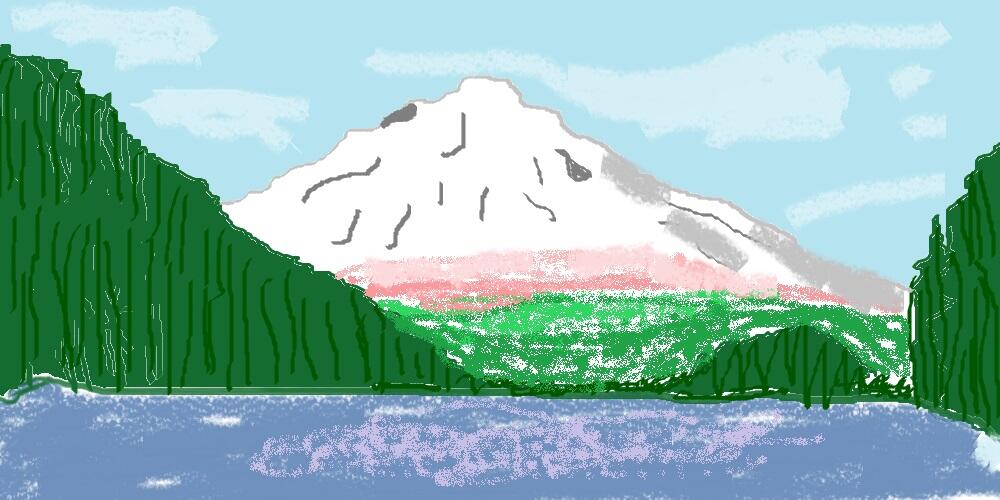Introduction
The inspiration that comes from observing works of art is the driving force that stimulates creativity and allows one to better understand the nature of the human thought. In order to express an idea, people often resort to visual images that can awaken different emotions and feelings. The aim of this work is to show how such an object of art as a photograph can embody the pacification and greatness of nature, which, in turn, can inspire the creation of an individual work. The imitation of nature’s images and the reflection of the beauty of the world help escape from everyday routine and pay attention to the greatness of art power.
Inspiration Piece
As an inspiration object, a photograph of a scenic landscape in Alaska is taken. This image is used on the website of a medical center that provides vision restoration services and helps patients undergo effective rehabilitation after surgical interventions. The authorship of the photograph is not indicated, but its main purpose is to show how beautiful nature can be, and sharp vision is the tool that allows enjoying amazingly picturesque views. The image presented in Figure 1 was posted in 2019, and it is one of the introductory pictures on the website of the medical center (“Better eye care,” 2019). This photograph encourages people to pay attention to the beauty of the landscape and become interested in the services of the clinic.

Personal Art Piece
The generated image is the imitation of the photograph presented, and in Figure 2, a schematic picture of the Alaskan landscape is depicted. An attempt to convey the colors of the original image reflects a creative mood that arose during the observation process. The created object is the result of observing the aforementioned picturesque site, and the result obtained cannot claim to be a masterpiece, but, at the same time, it reflects admiration for nature and its richness.

Connection Between the Two Images
Thematically, both images presented reflect one idea and mood. Their key similarity lies in color reproduction and the general schematic of the depicted landscape. In addition, the original drawing contains the basic elements of the source, in particular, the forest, the mountain, part of the lake, clouds, and foggy haze. Nevertheless, despite the similarity due to imitation, there are differences. According to FIUSM Contributing Writers (2017), visual art helps experience the beauty aspect physically by involving the viewer in the idea. The original image is two-dimensional, which does not allow immersing oneself in the atmosphere of beauty. At the same time, they are the same medium, and viewers can be imbued with proportions and the originality of the landscape, which is the key goal of the impact. The design elements of both images are similar, although in the photograph, individual objects are located more harmoniously than in the original picture. The simplicity of exposure is the tool that proves the genius of the natural background. Therefore, despite a similar mood and identical themes, both images differ in presentation power.
Conclusion
The comparison of the photo and its graphic imitation makes it possible to immerse oneself in the atmosphere of the beauty of nature and escape from the daily routine. Both images convey the same mood and include identical elements, although the two-dimensionality of the original image does not allow evaluating the landscape comprehensively. The design elements used in the original image convey the harmony of nature, and an attempt to convey this exposure in a graphic manner can help to understand the complexity of simplicity.
References
Better eye care for you and your family [Image]. (2019). Web.
FIUSM Contributing Writers. (2017). Art is a reflection on society and the times. Panther Now.